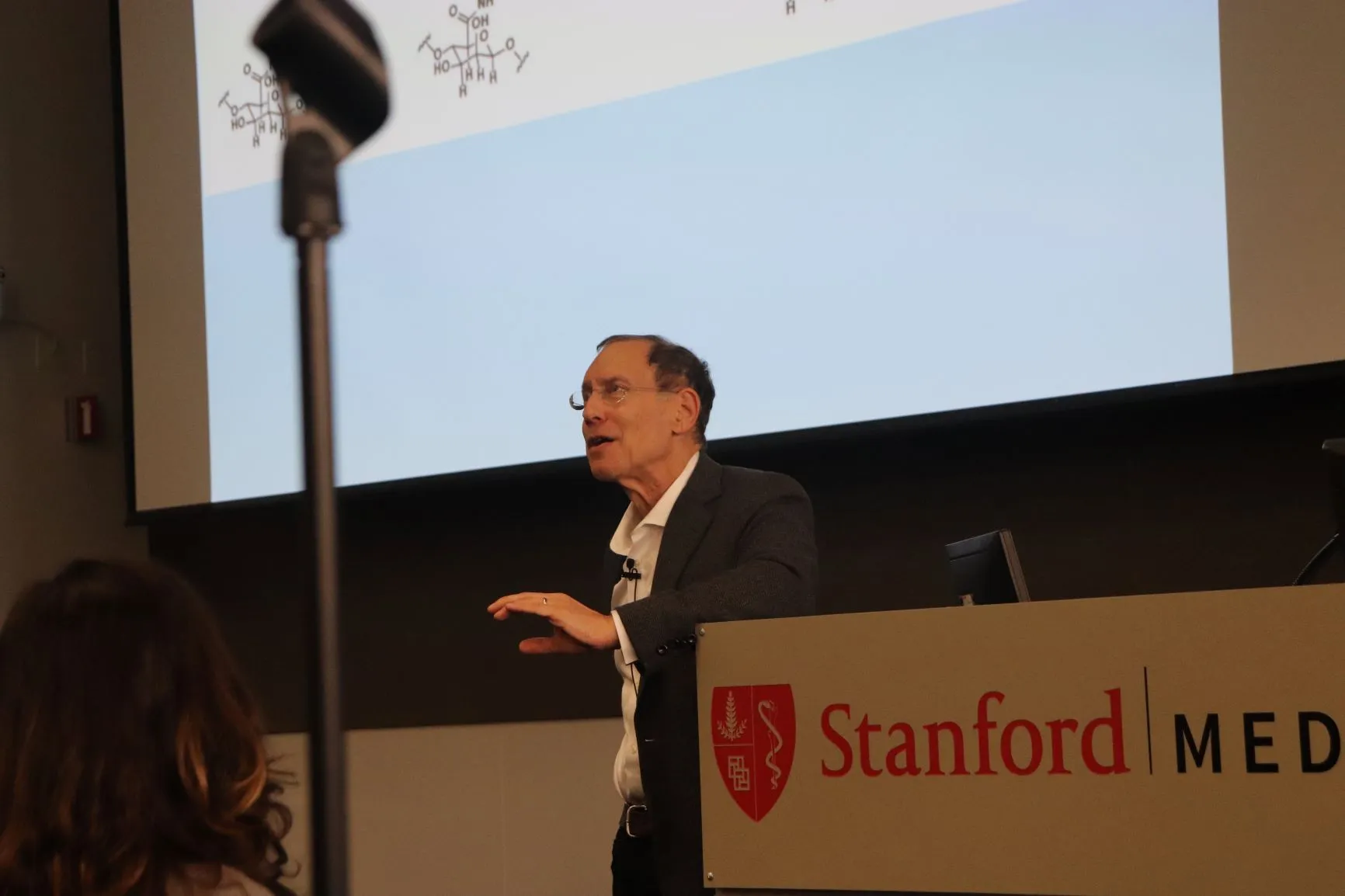Robert Langer, an MIT professor and chemical engineer who is widely regarded as the founder of the tissue engineering field in regenerative medicine, spoke about biomaterials and cell therapy at Stanford’s Li Ka Shing Center on Wednesday. Langer, who works at MIT’s David H. Koch Institute for Integrative Cancer Research, specifically discussed how advancements in tissue engineering can positively impact human lives.
The lecture was fourth in the “Imagining the Future: From Molecule to Medicine” seminar series, which is aimed at catalyzing interdisciplinary discussions on medicine and disease. According to Sanjiv Sam Gambhir, the Virginia and D.K. Ludwig Professor for Clinical Investigation in Cancer Research at Stanford, the primary mission of the seminar series is to bring the best scientists from across the world to talk about their fields of expertise.
Langer has authored more than 1,400 articles and has filed more than 1,260 issued and pending patents. For his work, he has been recognized as the most cited engineer in history. In one estimate by the Science History Institute, an organization that aims to preserve and promote the understanding of scientific history, Langer’s research has directly impacted more than two billion people.
“Dr. Langer has focused for decades on biomedical science, including the development of novel drugs and drug delivery strategies,” Gambhir said. “He combines the best of biomedical engineering and medical science to create novel solutions in health care.”
In his talk, Langer discussed his educational journey, which began with an undergraduate degree in chemical engineering from Cornell University in 1970. He later entered a career in biomedical health sciences, working as a postdoctoral fellow at Children’s Hospital Boston and at Harvard Medical School.
Under the mentorship of Judah Folkman, a medical scientist who focused on the role of blood vessels in tumor growth, Langer said he explored applying his chemical engineering background to an unsolved biomedical problem.
“[Our] idea was that if you could stop angiogenesis [development of new blood vessels], then maybe you could stop cancer,” Langer said. “It was highly criticized at the time, and it was my job to prove [the theory] to be right.”
Langer detailed various other projects on which he worked throughout his research career. In the mid-1970s, he developed a localized drug delivery system using polymers and advanced a mechanism for brain implants that locally delivers drugs for high grade glioma, a type of brain tumor. He also established a novel “scaffolding” method to regenerate injured or damaged tissues in the human body, such as those of burn victims.
However, as with Langer’s angiogenesis work, his other projects were initially met with skepticism.
“At a restaurant one evening, when an older scientist heard Langer’s concepts for polymeric drug delivery, he blew a cloud of smoke in Langer’s face,” said Michael Marletta, the C.H. and Annie Li Chair in Molecular Biology of Diseases at the University of California, Berkeley. “He said, ‘you better start looking for another job.’”
However, Langer’s persistence across decades has earned him praise. His work on high grade glioma is now approved in more than 30 countries. Langer believes his work created an archetype that researchers of multiple disciplines can utilize in the concept of local molecule delivery.
“I realized [from Langer’s work] that you don’t need complicated technologies,” said Emre Araci, a bioengineering assistant professor at Santa Clara University. “Simple devices with the right use can change the world, and that was very inspiring.”
Numerous publications, patents and years later, Langer is still working on advancing regenerative medicine and science by studying and developing new techniques in tissue engineering.
“The technologies Dr. Langer described, this is what we’re teaching in our classes,” said Julia Scott, an adjunct lecturer at Santa Clara University. “Realizing how much of an uphill road it was for Dr. Langer for the first two decades almost, that’s not very apparent when you look at the end point of where Dr. Langer is at now — a celebrated engineer and scientist.”
Langer and his lab continue to explore a range of unsolved scientific problems at MIT’s Department of Chemical Engineering.
“Tissue engineering and regenerative medicine is a wonderful challenge,” Langer said. “My hope is that someday, this could be a whole way of treating many diseases, for which now there are no treatments at all.”
Contact Tejas Athni at tathni ‘at’ stanford.edu.
